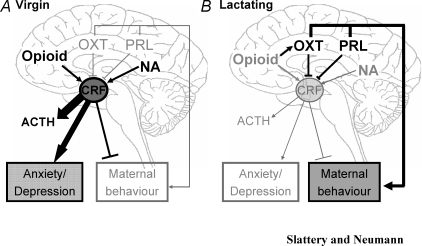Figure 1. Schematic representation of some of the neuroendocrine alterations that occur between virgin and lactating dams.
Virgins are characterized by having higher levels of opioid and noradrenergic (NA) inputs to the PVN than in lactating animals but lower expression of oxytocin (OXT) and prolactin (PRL). Whereas opioids have no apparent influence on OXT in virgin animals, they have been shown to increase OXT in the PVN during lactation. Furthermore, the effect of endogenous opioids on CRF release is attenuated during lactation. The combined effect of these alterations is an enhanced corticotrophin-releasing factor (CRF) release in response to stress in virgins, which leads to the release of corticotrophin (ACTH) and increased anxiety- and depression-related behaviour in comparison to lactating animals. By contrast, the low OXT and PRL levels, as well as elevated the CRF level, leads to lower levels of maternal behaviour in virgins compared with lactating animals. Thus disruption of these factors may contribute to postpartum depression, which is associated with increased anxiety and depression, as well as reduced maternal care. Black and thick arrows represent the predominant pathways in virgins and lactating animals while the grey and thin arrows show the systems that are at low levels (i.e. OXT and PRL in virgins) or attenuated (i.e. opioid and NA in lactation). Blocked lines represent factors which are inhibitory; factors with thick and black lines again represent the predominant systems in virgins or lactating animals compared with one another.

